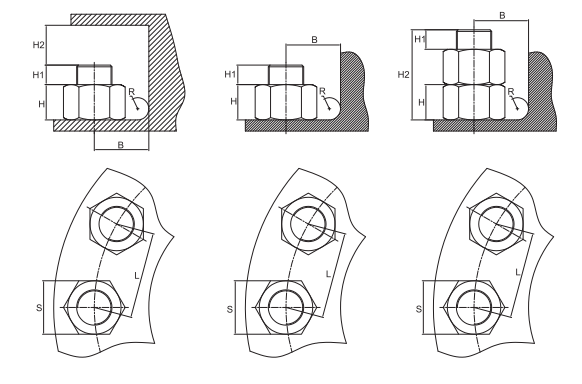Choosing the right hydraulic wrench system involves assessing several key factors to ensure the tool can efficiently and safely perform the required tasks. Today we write a breakdown of the essential questions and considerations when selecting a hydraulic wrench system:

Key Questions and Considerations
Is there any space limit for the tool’s working?
- Consideration: Evaluate the available working space where the hydraulic wrench will be used. This includes the clearance around the bolts and the accessibility of the work area. Space constraints may require a more compact tool or specific accessories to reach tight or awkward spaces.
What is the distance between the bolts linked?
- Consideration: The distance between bolts can affect the choice of wrench head or socket size. In some cases, the system may need to accommodate simultaneous operation on multiple bolts, requiring careful consideration of the wrench head design and accessibility.
What’s the size and grade of the bolt?
- Consideration: Determine the specific size (diameter) and grade (material strength) of the bolts. This information is critical for selecting the appropriate socket size and ensuring the wrench can handle the required torque without damaging the bolts or tool.
How big is the torque force needed for the job?
- Consideration: Calculate the required torque based on the application’s specifications and the bolt size. The hydraulic wrench system must be capable of delivering the necessary torque with accuracy and consistency. Consider both the minimum and maximum torque ranges the tool can achieve.
What is the maximum pressure needed for the job?
- Consideration: Identify the maximum hydraulic pressure needed to achieve the required torque. Ensure that both the hydraulic wrench and the pump can handle the required pressure levels. This also includes ensuring the hydraulic hoses and fittings are rated for the pressure.
What kind of pump is suitable for the job—electric-driven or air-driven?
- Consideration: The choice between electric-driven and air-driven pumps depends on several factors:
- Electric-Driven Pumps: Offer precise control and consistent power, making them suitable for applications requiring accurate torque settings. They are ideal for environments where electric power is readily available and safety conditions permit.
- Air-Driven Pumps: Suitable for explosive or hazardous environments where electrical systems might pose risks. They are also useful in situations where an air supply is already present. Air-driven systems can be lighter and more portable.
Additional Considerations
- Tool Durability and Maintenance: Choose a system with durable components that can withstand the working conditions. Consider ease of maintenance and the availability of service and spare parts.
- Siffofin Tsaro: Look for systems with built-in safety features such as overload protection, pressure relief valves, and emergency shut-off options.
- User Skill Level: Consider the skill level of the operators. Some systems may require specialized training for safe and effective use, while others may be more user-friendly.
- Environmental Conditions: Factor in the working environment, such as temperature, humidity, and potential exposure to chemicals or corrosive elements, which could impact tool performance and longevity.
Example Use Case
For maintenance work on large industrial machinery, where bolts require precise torque to ensure secure connections, a hydraulic torque wrench system would be essential. If the work area has limited space and multiple bolts are located close together, a compact hydraulic wrench with interchangeable low-profile heads would be ideal. Depending on the available power source, either an electric or air-driven pump could be selected, with an electric pump providing more consistent and precise control.
This setup would ensure that all bolts are tightened to the specified torque, maintaining the integrity of the machinery and preventing failures. Proper selection of the hydraulic wrench system based on these considerations ensures safety, efficiency, and longevity of both the tool and the components it is used on.
